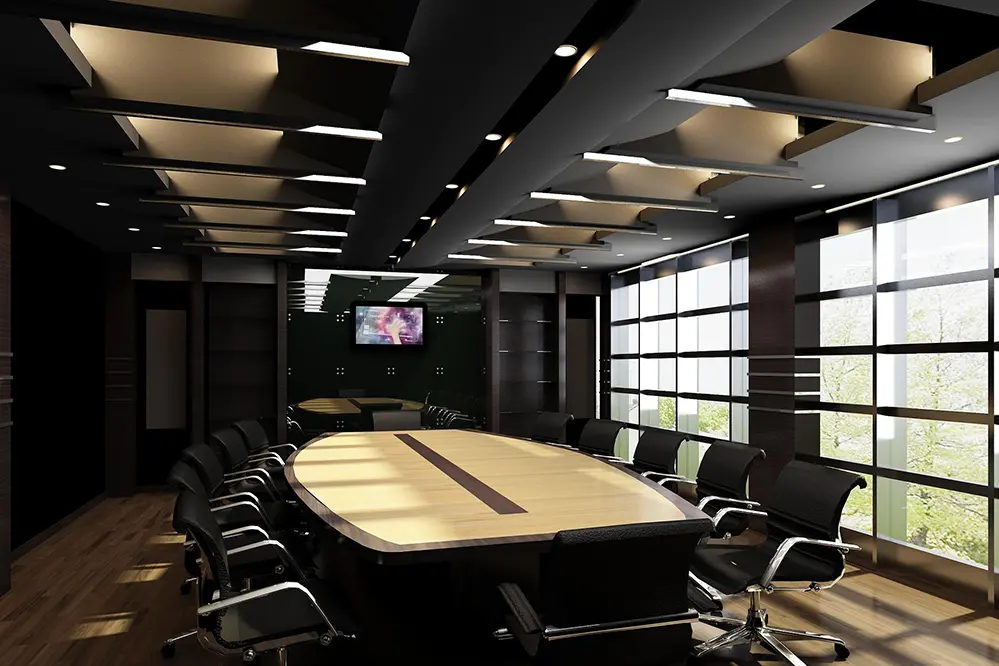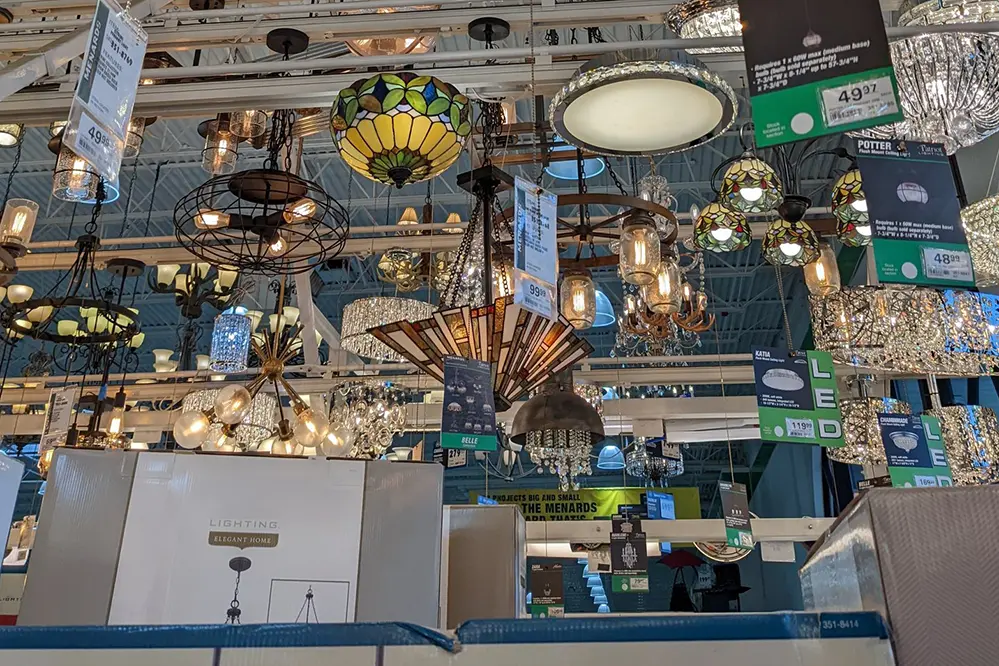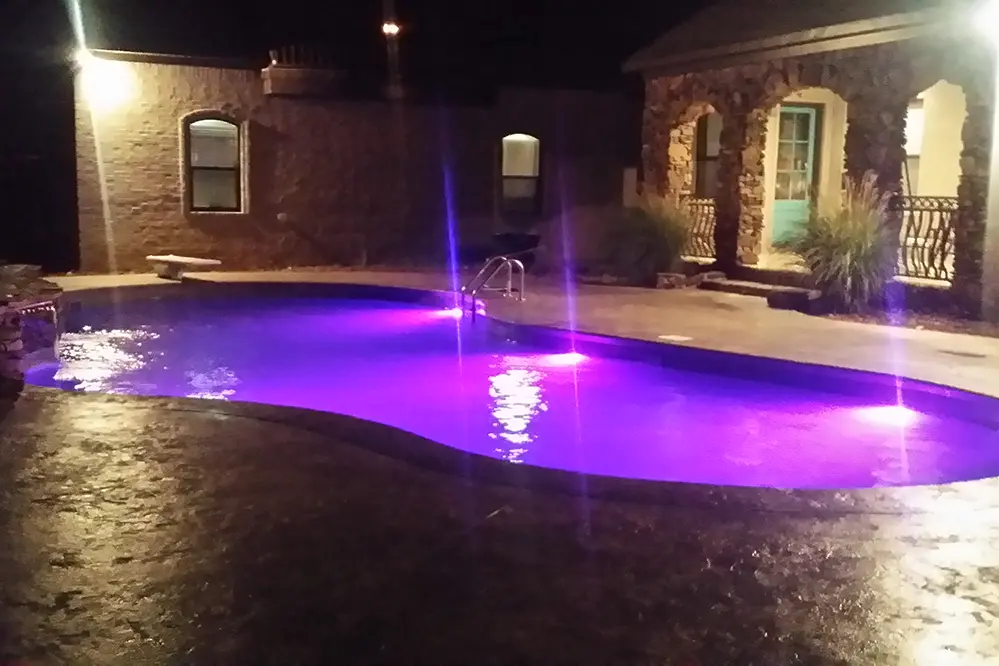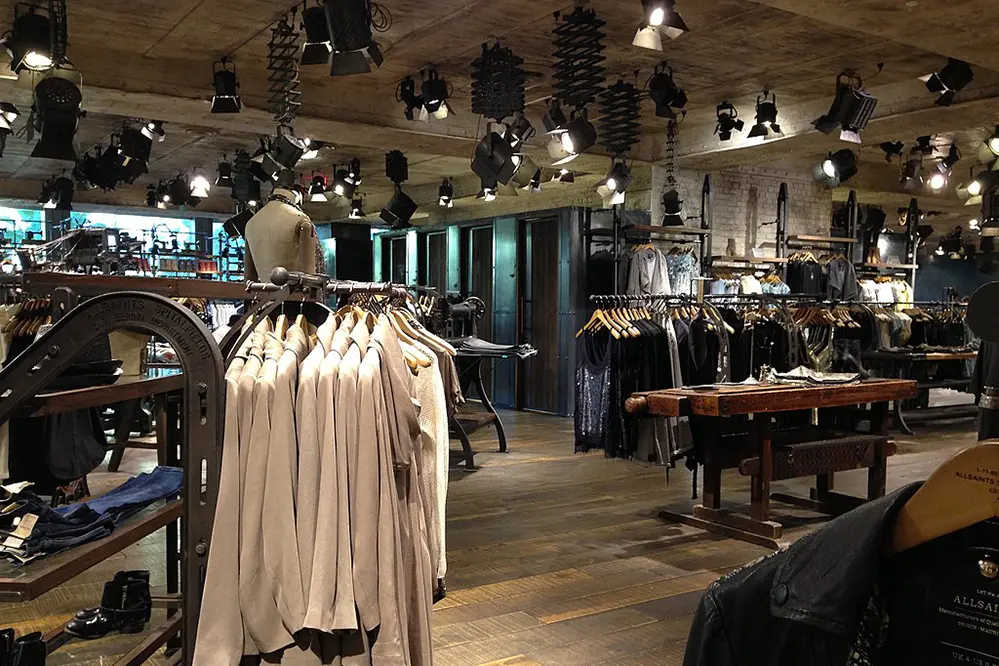“Lighting is the key to creating an environment that fosters productivity and creativity,” says renowned lighting designer, Jane Smith. In our “Ultimate Conference and Meeting Room Lighting Guide,” we explore how strategic lighting choices can transform your meeting spaces into dynamic centers of innovation. Lighting is not merely about visibility; understanding lumens helps in setting the mood, influencing productivity, and can even sway the success of crucial meetings.
The significance of proper lighting in conference and meeting rooms cannot be overstated. According to a study by the American Society of Interior Designers, 68% of employees express dissatisfaction with workplace lighting, which can lead to decreased productivity and increased fatigue. This statistic underscores the profound impact lighting has on both the ambiance and efficiency of a team, affecting everything from mood to focus and overall meeting success.
As you embark on this enlightening journey through our guide, prepare to discover how to optimize your conference room lighting for maximum impact. We will delve into the art and science of lighting design, explore the benefits of different lighting types, and provide actionable insights to enhance your meeting environments. Join us as we illuminate the path to creating spaces that not only meet but exceed your expectations.
Importance of Proper Conference Room Lighting
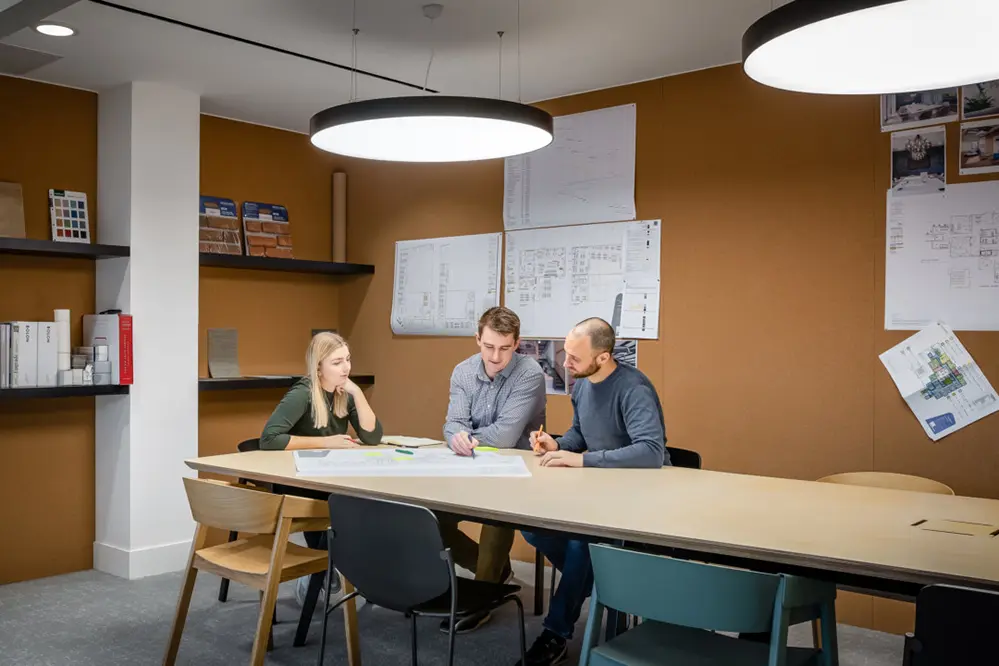
Proper lighting in conference rooms is more than aesthetics; it’s about enhancing experiences and provoking inspiration and growth.
The importance of proper lighting in a corporate environment cannot be overstated. Natural and artificial light balance affects focus, mood, and energy levels, thereby influencing productivity and overall effectiveness. Through well-designed lighting systems, participants can enjoy an atmosphere conducive to collaboration, fostering innovative problem-solving and comprehensive engagement.
Interestingly, lighting should act as a dynamic partner in the success of meetings. By striking the right balance, it streamlines attention, reduces eye strain, and ensures every participant feels present and can contribute to the collective goals effectively.
By implementing thoughtful lighting solutions that support varied functions, from intimate discussions to large presentations, businesses can harness the power of smart, adaptive lighting to meet specific needs. This enlightened approach not only raises the energy of the space but also instills a sense of professionalism and sophistication, encouraging productive forward-thinking and fostering seamless communication.
Assessing Your Lighting Needs
Identify the core functions of the space.
Understanding what tasks the room will host is critical, incorporating the principles of ergonomics to maximize comfort and efficiency. Are people expected to brainstorm ideas, present data, or participate in video conferences? Each activity may require different lighting conditions, from focused task lighting to ambient or accent lighting that highlights presentation areas. Consequently, clarity on the room’s primary functions will inform a lighting strategy that enhances both comfort and efficiency.
Evaluate how lighting impacts productivity.
You must recognize that lighting is not limited to – or even primarily focused on – aesthetic concerns; optimal lighting contributes functionally by reducing glare and eliminating visual fatigue.
Consider the room’s natural light sources – assess how they can be integrated with artificial solutions to create dynamic multi-layered lighting schemes.
These proactive evaluations of your space’s lighting requirements will help guide the integration of advanced lighting technologies, perfectly tailored to your unique requirements. Such foresight is essential to achieving any objectives in the new year and beyond, ensuring that your lighting solutions are as forward-thinking and effective as your business itself. Each decision in this realm serves as an investment in the long-term well-being of your most valuable asset: the people who animate the space.
Types of Lighting for Meetings
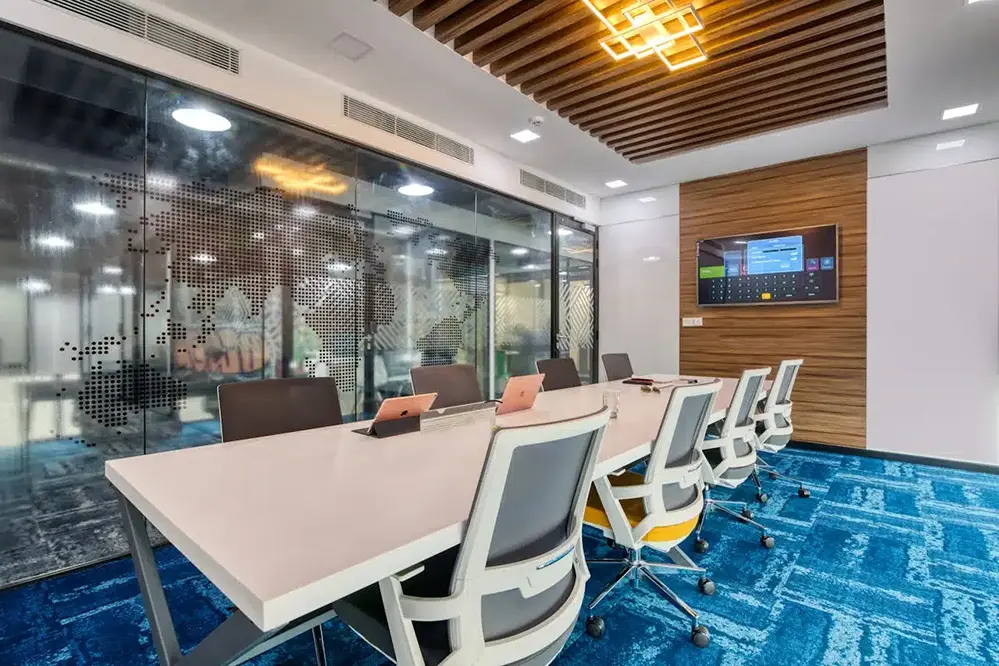
Incorporating various lighting types, a conference and meeting room lighting guide must address ambient, task, and accent lighting. Ambient lighting sets the overall tone, task lighting facilitates focused activities, and accent lighting adds a layer of visual interest, all of which combine to create a versatile and inspiring meeting environment.
Ambient Lighting Options
Ambient lighting serves as the foundational illumination layer, providing a comfortable environment for interactions. It perfectly complements other lighting forms to enhance productivity and engagement during meetings.
When considering the implementation of such a system, ceiling fixtures like “recessed lights” are often ideal. They provide a soft, diffuse light, essential for creating a welcoming atmosphere.
Ambient lighting can improve wellbeing, increasing workplace satisfaction by up to 30%, enhancing focus and positivity.
Choosing fixtures wisely: incorporate dimmable lights so the glow can be tailored to various meeting needs and times of day. This flexibility not only addresses diverse lighting requirements but also fosters adaptive spaces that cater to different purposes. An efficiently lit room invigorates discussions, sparking creativity and collaboration.
Task Lighting Solutions
Task lighting is an essential component in creating functional and dynamic meeting spaces, providing focused illumination that supports specific activities and tasks.
- Adjustable Desk Lamps: These provide direct, customizable light perfect for detailed work at individual workstations.
- Under-Cabinet Lighting: Offers focused illumination without occupying desk space, ideal for minimizing glare and shadows.
- Swing Arm Lamps: Their flexibility allows for light adjustment based on task requirements, ensuring optimal brightness.
- Clip-On Lights: A portable option that attaches easily, providing targeted light where needed most.
- Tabletop LED Lamps: Energy-efficient with varying brightness settings, suitable for individual focused work and group discussions.
Selecting the right task lighting enhances clarity and precision in tasks requiring visual acuity.
When combined with ambient lighting, task lighting fosters a productive and engaging environment for all participants.
By prioritizing versatile lighting solutions, you elevate the functionality and ambiance of the conference setting significantly.
Energy-Efficient Lighting Solutions
Optimizing energy use through innovative lighting solutions not only reduces operating costs but also enhances sustainability, striving for a brighter future with every watt saved.
LED technology is pivotal in energy-efficient solutions due to its low consumption.
These lights consume significantly less energy than traditional incandescent bulbs, often up to a quarter of the consumption, thereby reducing electricity bills and diminishing carbon footprints. This shift to LEDs embodies an intersection of economy, efficiency, and a commitment to ecological responsibility.
Motivated by these advancements, companies can pivot toward a more sustainable future by embracing energy-efficient lighting. Incorporating smart lighting systems, which allow adjustments based on occupancy and daylight availability, is not only forward-thinking but also demonstrably effective in reducing energy costs and optimizing utility. Such practices create an illuminating path for sustainable business practices and set a precedent for future-focused strategies.
LED vs. Fluorescent Lighting
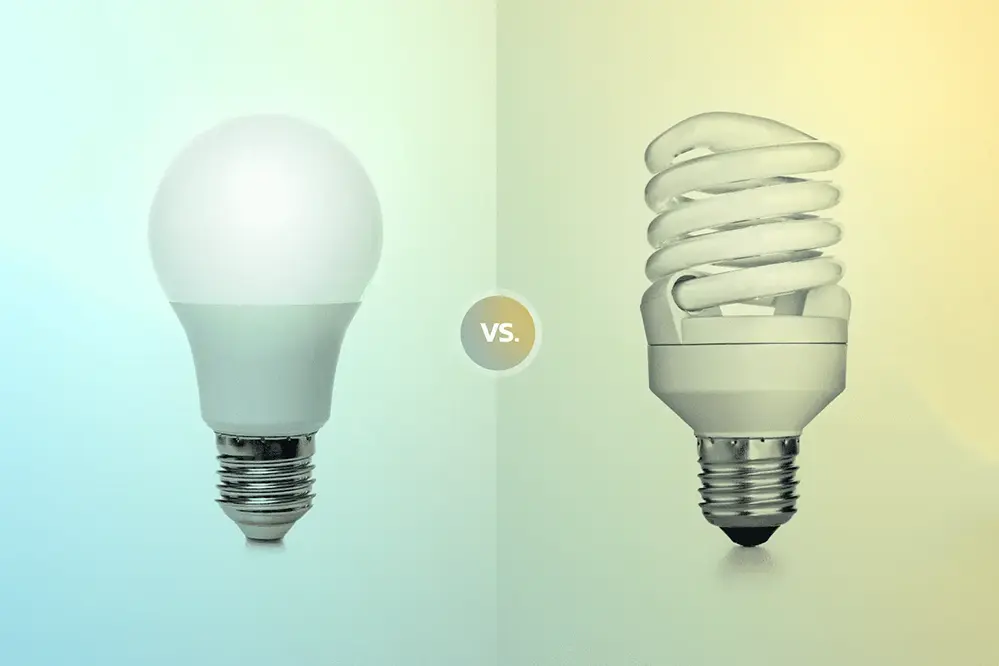
LED and fluorescent technologies are compelling options for conference and meeting room lighting, each with distinctive advantages over the other.
Generally, LED lights offer superior energy efficiency than fluorescent lights.
This efficiency is attributed mainly to their ability to provide substantial illumination while consuming fewer watts, translating to a matrix of reduced energy costs and protracted lifespan. The lighting experience is adaptable, precise, and conducive to various professional settings.
The inherent benefits of LEDs extend beyond just cost and efficiency to a plethora of advantages in lighting quality and environmental impact. When comparing LED to fluorescent, it’s evident that LEDs offer more sustainable choices. For instance, they operate without mercury—found in fluorescents—adding an extra layer of environmental consciousness to this choice. LED lighting is the ideal avenue for entities aspiring to “light the way” in sustainable innovation.
Balancing Natural and Artificial Light
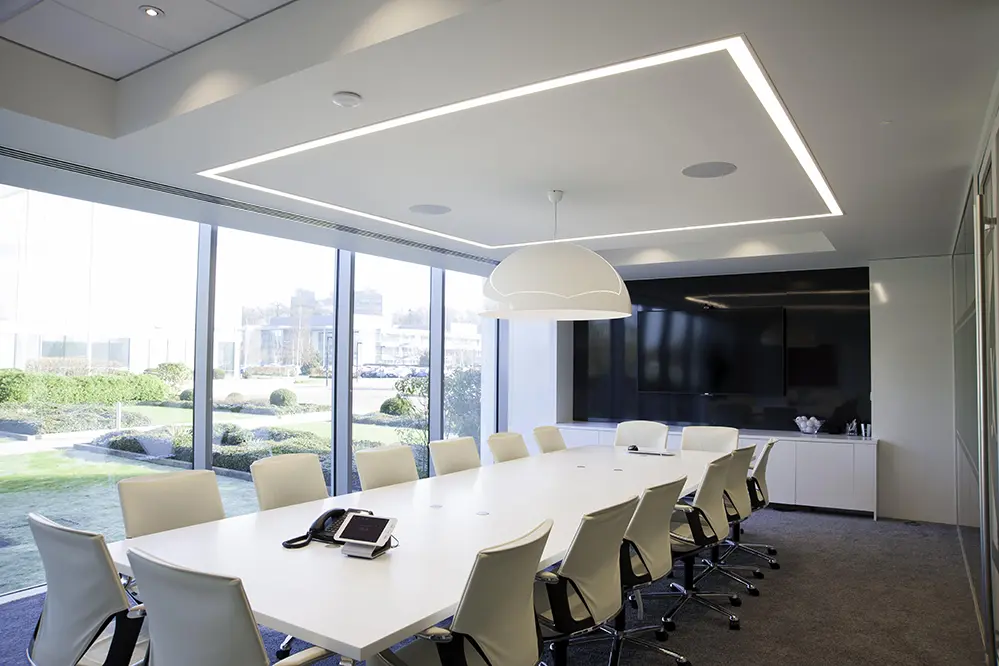
To achieve the ideal atmosphere in conference and meeting rooms, striking a balance between natural and artificial light is paramount. Each complements the other, creating a harmonious environment that inspires creativity and communication.
Optimizing this blend relies on understanding the unique architectural features and existing light sources of the space.
First, consider the location and size of windows as they significantly influence how daylight affects the room ambiance.
Strategically positioning artificial lighting to enhance daylight can create a seamless transition between varying lighting conditions throughout the day.
With emerging technologies like smart lighting systems, artificial sources can dynamically adjust their intensity and color temperature. These advancements ensure consistent lighting quality while adapting to changing daylight levels, ultimately enhancing the meeting experience.
Together, the fusion of these light sources elevates the room’s potential to boost productivity. Intuitive lighting design becomes a catalyst for vibrant discussions and innovative ideas.
Choosing the Right Color Temperature
Selecting the ideal color temperature is crucial.
Color temperature directly affects mood and focus. For conference and meeting rooms, choosing the right temperature is pivotal to fostering an atmosphere where ideas can flourish and solutions can be brainstormed with ease. Generally, aim for the range of 3500K to 5000K to promote alertness and clarity.
Cooler temperatures can enhance sharpness.
Balancing between too warm and too cool is critical – not just for creating the perfect environment to inspire innovative thinking and clear communication – but also maintaining a professional, yet welcoming ambiance.
Utilizing advanced LED lighting systems with adjustable color temperatures facilitates maximum efficiency, aligning with the latest new year trends which emphasize adaptability and sustainability. This flexibility empowers spaces to transition smoothly between different activities, ensuring that your lighting strategy supports every meeting’s unique objectives.
Lighting Controls and Automation
Lighting controls and automation stand at the forefront of optimizing conference and meeting room environments, providing a seamless blend of technology and user comfort.
Smart lighting systems offer unparalleled flexibility to tailor ambience to specific needs.
Innovative controls can dim the lights for presentations and brighten them for discussions, creating an adaptive setting that enhances productivity.
Advanced systems can integrate with meeting software for intelligent lighting automation.
These intelligent systems remember preferences and replicate them effortlessly, ensuring consistency and minimizing manual adjustment. They significantly contribute to energy efficiency by reducing unnecessary consumption and adapting to natural daylight.
Ultimately, the power of these systems unfolds the potential of spaces to reach their optimal functionality. Embrace the evolution of lighting technology and illuminate meetings with precision and purpose.
Incorporating Smart Lighting Systems
Embrace the future of illumination: smart lighting systems.
Incorporating smart lighting systems into conference and meeting rooms elevates functionality and aesthetics. This integration not only caters to diverse atmospheres by seamlessly adjusting light levels but also maximizes energy efficiency. Furthermore, staying at the forefront of technologic innovation ensures every conference achieves its utmost potential.
Lighting solutions are enhanced with intuitive smart features.
These installations allow for dynamic scenes — from quiet concentration to lively brainstorming sessions — all simply activated through smart control interfaces or integrated systems. Unlocking the promise of intelligent systems fosters greater collaboration and creativity within these essential spaces.
Such innovations empower meeting rooms with forward-thinking technology. Enhanced lighting promotes productivity by adapting to any requirement, blending seamlessly with the latest new year designs. As spaces become smarter, these systems drive efficiency and sustainability while creating unparalleled environments to inspire success.
Addressing Glare and Shadows
Effective lighting minimizes glare, striking the perfect balance essential for productivity and focus. In conference and meeting rooms, this balance is paramount, with every beam tailored to fit the space’s unique needs.
Achieving this involves strategically positioning lights and diffusers. This ensures occupants remain comfortable.
The key is employing indirect lighting solutions, diverting harsh angles that cast undermining shadows. This approach fosters a cohesive atmosphere, allowing participants to concentrate, communicate, and collaborate without distraction from unwanted light effects.
By harmonizing ambient and task lighting, one can provide the right mix for each moment. Utilizing adjustable fixtures or automated systems with “sun-following” capabilities further mitigates glare, promising adaptable, professional settings. This creates an environment of clarity and coherence, empowering every conversation and decision made within the room.
Acoustic Considerations in Lighting Design
Sound and light synergize to elevate spaces.
Incorporating acoustic considerations into lighting design not only enhances auditory experiences but also optimizes visual harmony. The dual impact ensures that both sound and light complement each other, offering an immersive environment where thoughts can flow freely. Strategically, this integration facilitates seamless communication and undisturbed focus critical for successful meetings.
Careful reflection on material choices can aid acoustics.
For instance, selecting sound-absorbing fixtures—storming with potential—can control reverberation without compromising light performance, thereby elevating the conference experience. Thoughtful designs mitigate noise, creating serene atmospheres conducive to collaboration.
Thus, modern meeting room designs can integrate innovative solutions balancing light and sound. Recent technological advancements allow for acoustic management alongside lighting elegance, crafting comprehensive environments that nurture productivity, ensuring meeting spaces are sanctuaries of innovation and clarity.
Maintenance and Longevity of Lighting Systems
To ensure the longevity and optimal performance of lighting systems in conference and meeting rooms, regular maintenance is crucial.
Start by implementing a preventative maintenance schedule. Regular checks can identify potential issues before they evolve into significant problems, reducing downtime and extending the system’s life.
Cleaning is another key component. Dust and debris can accumulate on fixtures, dimming the light output. Periodically clean fixtures to maintain their efficiency and longevity, ensuring an optimal lighting environment remains intact.
Additionally, ensure to replace bulbs promptly when necessary. A timely replacement not only ensures consistent lighting quality but also prevents electrical strain on the entire system, avoiding unnecessary energy consumption and costs.
Proactive measures ensure lighting systems deliver optimal performance, extending their lifespan while enhancing the workspace.
Budget-Friendly Lighting Upgrades
Enhancing a conference room’s ambiance need not be an extravagant endeavor. In fact, with simple adjustments, a remarkable transformation is achievable, reflecting care and intention economically.
LED bulbs present an accessible entry to efficient lighting.
Their longevity makes them the prudent choice for significant energy savings (surpassing traditional incandescent options) and consistency.
Switching to dimmer switches is another powerful strategy to maximize ambiance while managing costs effectively.
These allow for the modulation of light intensity to suit diverse meeting needs, substantially extending bulb lifespan and optimizing energy usage.
Furthermore, using light-reflective wall paint enhances illumination by bouncing light, reducing the need for more fixtures and thus lowering costs.
Ultimately, with a dash of creativity and strategic selection, lighting upgrades infuse an atmosphere where innovators thrive. Thoughtful choices build environments that inspire productivity and creativity.
Custom Lighting Designs for Conference Rooms
Custom lighting designs for conference rooms must harmonize both functionality and aesthetics to create spaces that foster creativity and efficiency.
In recent years, advances in lighting technology have expanded possibilities, allowing designers to create dynamic environments where interaction and innovation thrive. Tailored solutions cater to various meeting requirements by integrating adaptable lighting systems, heightening room engagement and utility.
Today, it’s no longer sufficient to simply install lights; it’s about crafting a tailored experience. Custom designs consider the room’s purpose, employing smart lighting solutions to shift moods seamlessly and enhance focus, thereby invigorating the meeting agenda.
Leveraging the latest in LED technology, installations can emulate natural daylight, inspiring energy and alertness, while warm hues create a tranquil ambiance for those crucial brainstorming sessions, fostering collaboration.
Investing in custom lighting designs promises a bright future, transforming conference rooms into hubs of creativity and success.
Conclusion: Key Takeaways for Conference and Meeting Room Lighting Guide
Lighting is a pivotal element in the success of conference rooms, significantly impacting mood and engagement. It goes beyond mere brightness, serving as a catalyst for creating effective meeting spaces. By tailoring lighting to the specific needs of different gatherings, organizations can unlock the full potential of their rooms, fostering deeper connections and facilitating more productive interactions.
Incorporating both natural and artificial light sources, along with the latest lighting technologies, can transform meeting spaces into adaptable and inspirational environments. This thoughtful integration allows for a dynamic atmosphere that can be adjusted to suit various scenarios, enhancing both communication and productivity. As lighting technology evolves, staying informed and implementing these advancements ensures that spaces remain inviting and effective.
Ultimately, strategic lighting approaches elevate meetings from mundane to transformative experiences, driving collaboration and productivity to align with contemporary standards. Investing in advanced lighting solutions not only illuminates spaces but also transcends traditional limitations, setting new benchmarks for environments of engagement and innovation.
